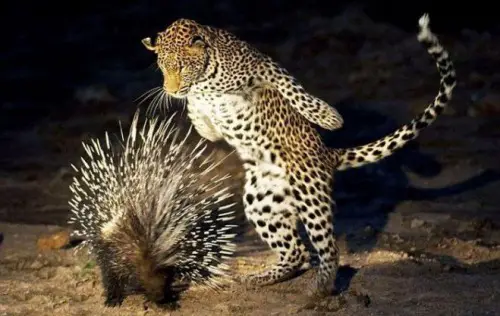

The two subfamilies of New World porcupines are mostly smaller (although the North American porcupine reaches about 85 cm or 33 in in length and 18 kg or 40 lb), have their quills attached singly rather than grouped in clusters, and are excellent climbers, spending much of their time in trees. The 11 Old World porcupines tend to be fairly large and have spines grouped in clusters. Old World compared with New World species The two families of porcupines are quite different, and although both belong to the Hystricognathi branch of the vast order Rodentia, they are not closely related. Porcupines vary in size considerably: Rothschild's porcupine of South America weighs less than a kilogram (2.2 lb) the crested porcupine found in Italy, North Africa, and sub-Saharan Africa can grow to well over 27 kg (60 lb). Evolution Ī porcupine is any of 58 species of rodents belonging to the families Erethizontidae (genera: Coendou, Erethizon, and Chaetomys) or Hystricidae (genera: Atherurus, Hystrix, and Trichys). When born, a porcupette's quills are soft hair they harden within a few days, forming the sharp quills of adults. A regional American name for the animal is "quill-pig". The word "porcupine" comes from Latin porcus pig + spina spine, quill, via Old Italian (Italian "porcospino", thorn-pig)- Middle French- Middle English. Porcupines' spiny protection resembles that of the only distantly related erinaceomorph hedgehogs and Australian monotreme echidnas as well as tenrecid Porcupines' colouration consists of various shades of brown, grey and white. Weighing 5–16 kg (12–35 lb), they are rounded, large, and slow, and use an aposematic strategy of defence.

They are less strictly nocturnal than their Old World counterparts and generally smaller. They live in wooded areas and can climb trees, where some species spend their entire lives. The New World porcupines (Erethizontidae) are indigenous to North America and northern South America. They are large, terrestrial, and strictly nocturnal. The Old World porcupines (Hystricidae) live in Italy, Asia (western and southern), and most of Africa. The largest species of porcupine is the third-largest living rodent in the world, after the capybara and beaver.

Despite this, the two groups are distinct from one another and are not closely related to each other within the Hystricognathi. Both families belong to the infraorder Hystricognathi within the profoundly diverse order Rodentia and display superficially similar coats of rigid or semi-rigid quills, which are modified hairs composed of keratin. The term covers two families of animals: the Old World porcupines of family Hystricidae, and the New World porcupines of family Erethizontidae. Porcupines are large rodents with coats of sharp spines, or quills, that protect them against predation. Rodent with a coat of sharp spines PorcupineĬladistically included but traditionally excluded taxa


 0 kommentar(er)
0 kommentar(er)
